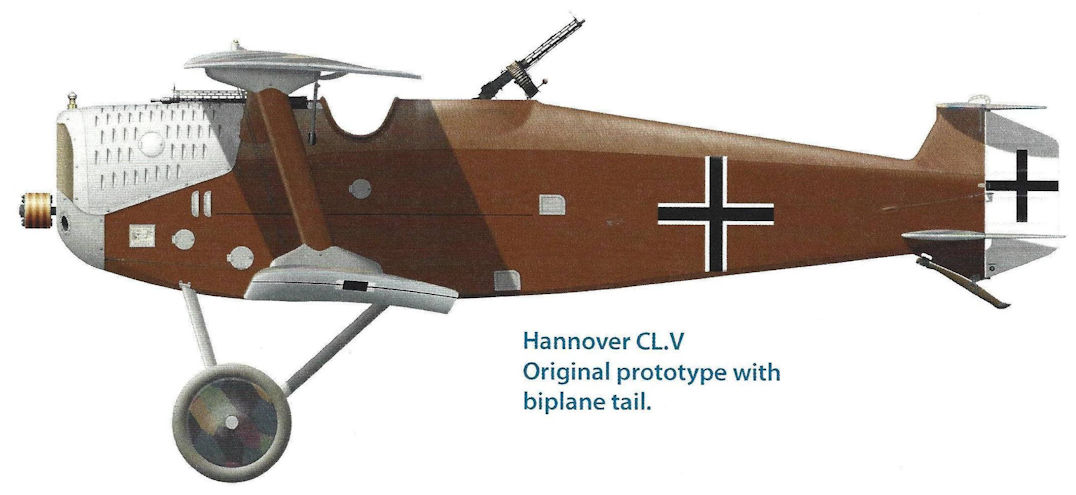O.Thetford, P.Gray German Aircraft of the First World War (Putnam)
Hannover CL V
Hawa produced the CL V late in 1918 in two variants: the first with the characteristic biplane tail and the second with an orthodox empennage. Some fifty airframes were thought to have been completed by the Armistice. Engine, 185 h.p. B.M.W. IIIa. Span, 10.56 m. (34 ft. 7 3/4 in.), biplane tail; 10.49 m. (34 ft. 5 in.), mono tail. Length, 7.1 m. (23 ft. 3 5/8 in.), height, 2.9 m. (9 ft. 6 1/4 in.). Area, 28.5 sq.m. (308 sq.ft.). Weights: Empty, 720 kg. (1,584 lb.). Loaded, 1,080 kg. (2,376 lb.). Speed, 185 km.hr. (115.625 m.p.h.) at 2,000 m. (6,560 ft.). Climb, 1,000 m. (3,280 ft.) in 3.3 min. Ceiling, 9,000 m. (29,520 ft.). Duration, ca. 3 hr. Armament, one Parabellum and one Spandau machine-gun.
W.Green, G.Swanborough The Complete Book of Fighters
HANNOVER CL V Germany
In mid-1918, the Idflieg prepared a specification calling for a Jagdzweisitzer - a two-seat fighter intended to engage the newer Allied single-seaters on even terms. It was to emphasise high speed, diving capability and manoeuvrability, and carry a fixed forward-firing armament of twin synchronised machine guns plus a third gun in the rear cockpit. To meet this requirement, which called for the aircraft to be tested to single-seat fighter load requirements, Hermann Dorner produced an extremely rugged and compact airframe. Designated CL V, the prototype was powered by a 186 hp BMW IIIa engine. Tested against a similarly-powered Fokker D VII, it demonstrated comparable speed and climb. With the original biplane tail replaced by one of monoplane configuration, the CL V was ordered into production, a contract for 100 aircraft being placed in September 1918, although it is doubtful if any of the 46 completed before the end of hostilities reached the Front. A further 62 were completed after the Armistice. A stripped down example of the CL V was used to establish a world altitude record of 27,362 ft (8 340 m) on 22 November 1919. During 1923-24, the Kjeller Flyvemaskinsfabrik at Halden, Norway, built 14 CL Vs under licence for the Norwegian Army as the F.F.7 Hauk(Hawk), these remaining in service until 1929.
Max speed, 109 mph (175 km/h) at 6,560 ft (2 000 m).
Time to 9,840 ft (3 000 m), 12 min.
Range, 211 mis (340 km).
Empty weight, 1,587 lb (720 kg).
Loaded weight, 2,381 lb (1080 kg).
Span, 34 ft 5 in (10,49 m).
Length, 22 ft 11 1/2 in (7,00 m).
Height, 9 ft 3 1/4 in (2,84 m).
Wing area, 306.78 sq ft (28,50 m2).
C.Owers, J.Herris Hannover Aircraft of WWI (A Centennial Perspective on Great War Airplanes 46)
Hannover CL.V
The next Hawa design, its final design of the war, was the CL.V, powered by the 170 hp Mercedes D.IIIa. The uncovered CL.V airframe was inspected in June 1918, and it was hoped the first flight would occur in July. Although intended to replace the CL.IIIa in production, the Hawa CL.V was based on a scaled down, refined version of the C.IV airframe. Its robust cabane struts were single, streamlined struts on each side that were integral with the aircraft's fuselage. The interplane struts were I-struts designed for good field of view and reduced drag. Fabric-covered duralumin control surfaces were used. A nose radiator was employed and the aircraft retained the biplane tail that characterized the earlier Hawa CL-types and which had been adopted to improve the gunner's field of fire.
The CL.V was load-tested in July with the biplane tail. However, at Hawa's request, a CL.V prototype with conventional tail was substituted. The tests revealed insufficient strength of the elevator, rudder, undercarriage, and center-section. Nevertheless, 20 CL.Vs powered by the 170 hp Mercedes were ordered for front-line evaluation with the requirement that the first production aircraft be tested again to verify it met the strength requirements. Upon retest the Typenprufung was successfully passed on 7 October 1918.
However, in September Idflieg had decided that the Hawa CL.V order would not be increased. The reason was that Idflieg had issued two new class specifications for Jagdzweisitzer (two-seat fighter) and a light Schlachtfluzgzeug (ground-attack aircraft) to address requests from the commander of the German Air Service.
The Jagdzweisitzer concept had evolved from combat experience and front-line demands. The Hawa CL.V was recognized as having the best performance and flight characteristics for its power. When powered by the 185 hp BMW.IIIa engine it was as fast as the BMW-powered Fokker D.VII, the best German fighter. Furthermore, the CL.V had excellent maneuverability, fully as good as the Albatros D.III in mock combat. It was realized that was not yet good enough but improvement was expected from tuning the airframe. As a result of the tests, it was recommended that 20 CL.Vs powered by BMW.IIIa engines be ordered to the Jagdzweisitzer requirement.
Essentially, the Jagdzweisitzer concept was simply an evolution of the original escort fighter concept of late 1916 that resulted in the CL-category. With three guns, two synchronized for the pilot plus a flexible gun for the observer, plus fighter-like performance and airframe strength, the Jagdzweisitzer was expected to penetrate enemy airspace and meet enemy fighters on basically even terms. If the war had continued the CL-category of aircraft would have been built to Jagdzweisitzer specifications rather than establishing a separate category. After the first batch of 20, all subsequent CL.V aircraft were built to Jagdzweisitzer standards and load-tested to single-seat fighter specifications.
The light Schlachtflugzeug class (Cls) was established in September 1918 for aircraft designed for ground-support. The Cls specification required a higher useful load - meaning more ammunition and 50 kg of anti-personnel bombs. For this class the requirements were higher speed, maneuverability, and diving capability rather than climb rate. Like the new CL-aircraft the Cls-types were to be built and tested to the single-seat load requirements. The Hawa CL.V may have fulfilled the Cls role also.
A total of 108 Hannover CL.Vs were built, 46 before the Armistice and 62 after, and many of these were obtained by the air services of the new nations created as a result of the war's end.
However, the CL.V saga does not end there. Norway chose the Hannover CL.V for license production at the Kjeller Flyvermaskinfabrikk in Hal-den. Under the designation F.F. 7 Hauk ("Hawk"), 14 aircraft were built in 1923-1924. These aircraft were powered by the 185 hp BMW.IIIa engine and were used as reconnaissance fighters and advanced trainers. The Hauk lasted in Norwegian service until 1929.
Hannover Postwar
<...>
A civil conversion of the CL.V was the F.6, intended as a fast two-seat courier aircraft. Jane’s stated that the CL.V was developed with the view to increasing speed but not completed in time for war production. The main features were the front car type radiator fitted with blinds, a single T-type interplane strut on each side and an extended use of duralumin for fittings. The power plant could be a 160-hp Mercedes or Benz, or 185-hp B.M.W.3a. and was "superior in speed and climb to any of their scouts then built." D.82, D.84 and D.110 were registered as F 6 types.
D.83, D.84 along with D.110 went to the Reichstreuhandgesellshaft (RTG - German trust company) on 15 May 1920, and all were destroyed in August. No civilian versions of Hannover wartime aircraft were entered onto the second civil registration listings.
<...>
The company began to manufacture automobiles and trucks in 1919 and by 1920 a major expansion of its factory was underway.
The end of the war did not see the end of the Hannovers flying for the German Army. They were used by the units supporting the Freikorps in the Baltic region along with other modern German aircraft such as the Junkers all metal fighters.
The Lists ser Luftfahrzeiuge und Motor en Nach Typen, listed all aircraft in Germany's possession at 10 April 1920, according to the German authorities. The original was copied in the Musee del’Air by the late P.M. Grosz. The following Hannover biplanes were listed under the following categories: 1. are sometimes installed in the aeroplanes. 2. With engine.
The Polizei-Fliegerstaffeln (Air Police Squadrons) also operated a variety of military aircraft including two Hannover CL.II, ten CL.IIIa and eight CL.V biplanes in January 1920. The Air Police at Stettin had CL.V 9632/18 together with a Fokker D.VII and a Junkers CL.I in its inventory. CL.IIa (Rol) CL.539/18 was reportedly operated by the Polizei-Fliegerstaffeln at Schwerin after the Armistice.
Hanover CL.I (sic) 9693/18 was reportedly destroyed by the RTG on 1 February 1922, along with two Fokker D.VII biplanes, 3587/18 and 2147/18; a Rumpler C.IV and a Siemens-Schuckert D type.
According to the IAACC, Hannover sold a GL.V, two CL.V and three CL.III biplanes between the Armistice and the signing of the Peace Treaty. It is assumed that the GL designation is a clerical error.
Foreign Hannovers
Italy
Italy selected three Hannovers, CL.IIIa 3886/18 and 3891/18, as well as a CL.V, amongst some 131 aeroplanes that were delivered as war reparations. They were to be delivered in June and July 1920, however the April 1921 list of aircraft actually delivered shows only one Hannover.
Japan
Japan received CL.V 1955/17 and it was handed over to the Army Aeronautical School.
Norway
In 1921 Norway decided to get rid of the obsolete miscellaneous collection of WWI aircraft that were used by the Army's Haerens Flyvapen (Army Air Arm) and reequip with modern aircraft. A specification was drawn up in 1919 for a two-seat reconnaissance and bomber aeroplane. It was to be powered by a 360-hp Rolls Royce Eagle VIII., however this was later changed to a 275-hp of unknown type. A top speed of 172 kph at a take-off weight of 1,760 kg was specified. Climb to 1,000 m was to be 2 min 10 sec and to 2,000 m, 4 min 46 sec, with a ceiling of 7,400 m. This was given the designation F.F.7 by the Hastens Flyvemaskinfabrikk where it was to be built, however the financial situation of the country led to the project being abandoned. Following an extensive Parliamentary Commission of enquiry, it was decided to acquire a license for the construction of a significantly smaller and cheaper aircraft. After evaluating different types, the choice of the Hannover CL.V was made and a manufacturing license was acquired in 1921 at a price of 13,000 Norwegian Kroner. The CL.V was designated F.F.7 and christened Hauk (Hawk) in Norwegian service.
1923 and 1924 by the government owned and operated Kjeller Flyvemaskinsfabrikk at Kjeller, which is located about 20 km from Oslo. As they were for the Haerens Flyvapen they received odd serial numbers, as even numbers were used by the Marinens Flyvapen (Naval Air Arm).
Five Bristol F2B Fighters had been purchased from the UK in 1921 but they were powered by the unreliable Siddeley Puma engine. Norway wanted to cease reliance on foreign suppliers. The Haerens Flyvapen was convinced that the Hannover CL.V was so far ahead of its time that it would be constructed for a number of years to come. It was soon proved that this assumption was completely wrong. It was relatively expensive to build, and had little speed compared to other contemporary aircraft types. The Hauk became a disappointment and the specifications that were to lead to the aircraft's replacement, the Fokker C.V, were presented only four months after the first Hauk was in flown at Kjeller.
The first series of ten Norwegian-built F.F.7 Hauk biplanes was commissioned at Kjeller in the first half of 1922 under Order No. 2000, and ten 185-hp BMW IIIA engines were acquired from Germany. The aircraft were awarded serial numbers from 203 through 221 and the price for the 10 machines was set at kr 239.300, excluding the engines, which cost an extra kr 171.100. The final price for the first series was in excess of kr 340,000, including engines, before the work was completed. Serial No. 203 was flown for the first time on 19 September 1922, and was subject to comprehensive testing. On the first flight, 203 was flown by 1st Ltn Brynjulf Gottenborg with 1st Ltn Ernst A Wessel as passenger. The BMW engine was equipped with a two-bladed Argus airscrew and the aircraft had a total weight of 815 kg. Everything worked normally and two days later the aircraft was taken up to 7,000 m altitude in 49 minutes in a climbing test, which was reached with a speed of 88 to 96 kph. On 25 September, Gottenborg would take the aeroplane up to 7,230 m and thought that he could easily reach 8,000 m. A Benz airscrew was tested with a bad result and it was therefore the Argus airscrew that was used in the Hauk in the years ahead.
During speed tests at Kjeller on 18 December 1922, the maximum speed measurements showed an average of 153 kph over five runs. However, this was by no means really the top speed as during the tests, the engine shook vigorously when full throttle was applied. Landing speed was between 75 and 80 kph.
The remaining nine aircraft on order No. 2000 could now be finally completed, as both fuselages and wings had been ready at the factory for several months.
By mid-January 1923, the characteristics of the aircraft were determined with certainty. No. 203 was kept at the Aircraft Factory until 4 June for further trials and testing of equipment. At the end of the trial period, the aircraft underwent a full main airframe inspection before it was handed over to the Sondenfjeldske Flyveavdelning (SFA -Southern Flight Section) at Kjeller on 26 November 1922.
The plane's top speed was estimated at 170 kph, but No. 215 reached an average speed of 167.2 kph over six flights in trials in early August 1923.
Another series of four F.F.7 Hauks was started in early 1924 under Order No. 2001. They were assigned serial numbers from 223 to 229, and were identical to the first ten planes. At the same time, two aircraft, Nos. 205 and 207, were modified with dual controls for advanced training. The first aircraft on Order 2001, No. 223, was handed over to the SFA on 11 July 1924, followed by 225 and 227 on 26th that same month. Aircraft No. 229, for some unknown reasons, was not delivered until 23 August.
In the meanwhile, a reconnaissance section was established at Nordenfleldske Flyveavdeling (NFA - Northern Flight Section) at Vaernes. On 17 November 1923, Nos. 215, 217, 219 and 221 were packed for rail transport northwards. The intention was that the planes were to be used in the weapons exercises at Vaernes in February the following year.
In the summer of 1924, it was decided that the Army Air Force would participate with two F.F.7 Hauks during the Scandinavian Flight Meeting at Gothenburg from 9 to 10 August. Two recently completed Hauks, Nos. 225 and 227, were sent with Lts Feiring and Reistad as pilots. During one of the exhibitions, Reistad set a new Scandinavian altitude record of 8,450 m. His aircraft was not airworthy on this day so he borrowed Feiring's and thanked him for the loan of his Hauk by setting the new record, beating Feiring's record of 8,450 m!
Problems soon arose with the construction of the Hauk. Being a lightly constructed aeroplane, in order to achieve the required strength, the machines required quality materials and a careful build. Unfortunately, the glue selected by the Norwegians lost strength when exposed to moisture and sunlight. During an exercise at Gardermoen in August 1925, the roof of the hangar was not waterproof and there was a lot of rain. The glued joints failed and the aircraft were left for many days waiting for repair. With long-term storage the fuselage warped such that the machines flew right wing low. Strong sunlight caused the veneer to fracture and the pigmented dope peeled off. However, the machines handled winter very well.
The conditions of the fields that the Hauk operated from had to be carefully considered. The rigid tail skid and its weak attachment caused problems as several times the skid fell off tearing a piece of veneer with it. The rudder was then subject to impact, and on one occasion the entire tail came off. Experiments with a winter tail skid were successful. The Hauk was also operated on skis. It was emphasised that caution had to be exercised in taxying the Haul.
Col Leif Feiring recalled that the Hauk was easy to fly and highly manoeuvrable but because of its light construction could be difficult to handle in a crosswind. Landing in a crosswind was not advised unless it was absolutely necessary. During an observers course in 1926 the weather was so bad that the Hauks could not fly. For its time its rate of climb was almost phenomenal. The type was reputed to enter an unintended spin easily if the airspeed became too low. At least one unintentional spin being reported for the years 1923 - 1928, mostly without deadly results. For this reason pilots were advised to land the Hauk at higher speeds than other aircraft. Proposals to include ailerons on the lower wing were considered around 1924 but were abandoned. Most modifications were to the cockpit to allow for the stowage of new equipment such as Irving parachutes.
Pilots used to sit on a folded blanket in order to improve their field of vision. The pilot's seat was not designed for a parachute and with a parachute on the pilot had difficulty in entering his seat due to the narrowness of the cockpit. It was proposed to extend the cockpit opening by 60 - 70 mm towards the rudder, and at the same time extend the backrest and tilted slightly so that the parachute would not be caught. It was recommended that the modifications be carried out and it is assumed that this was done.
The use of Poste a Magneto Type II radio led to a wind-driven generation being installed on the fuselage side in front of the cockpit. This radio was heavy and had a range of only 20-30 km. During the first radio exercise No. 227 crashed and the radio exercises were discontinued for one reason or another. Later a lighter English radio of about 100 W was installed. A trailing antenna was used from the aircraft.
No.225 was equipped with a Gaumont camera for vertical photography. When installed in the conventional way in the observer's cockpit, this individual had to adopt a very cramped position to operate the camera. In this position it was very difficult to follow the course of the aircraft during a photographic session. The camera position was moved such that the observer could sit down to operate the camera. In addition, it was possible to install an aiming frame for the observer.
For bombing practice cement practice bombs were used. These suffered distortion and when recovered were difficult to fix to the bomb racks. The NFA proposed that "iron" bombs be obtained that would a drop from 50 to 200 m without being deformed. There was also a shortage of live bombs for crews to obtain practice and learn their capabilities against different targets. During an observer's course at Odnes in 1927, discs were placed on the ice of the Randsfjorden and were targeted from low level to 1,000 m.
By the end of 1924, F.F.7 aircraft were distributed as follows: - Serial Nos. 203, 205, 209, 211, 223, 225, 227 and 229 with the SFA; Nos. 207 and 213 at the Flyveskolen (at the Flyvemaskinfabrikken), and Nos. 215, 217, 219 and 221 at the NFA.
During the SFA weapons exercise in 1928, one unit was created with six Hauks - Nos. 203, 205, 209, 213, 223 and 225. No. 213 was loaned by Flyveskolen for the exercise. Nos. 203 and 213 crashed during the exercise. The wings of Nos. 205 and 225 had warped so badly that they were declared non-airworthy. The SFA recommended that these two be struck off charge. As a result the following year it was suggested that the Hauk be phased out over the next couple of years.
The aircraft type was used for all major activities which unfortunately meant more casualties. On 26 February 1925, the machine was grounded as the glue used in the first series of Hauks proved to deteriorate in service. Aerobatics were forbidden with the type. In spite of this, 1925 became the major accident year for the aircraft. It began when Hauk No. 215 crashed into the Stjordalselva River on departure from Vaernes on 27 February. Lts Lund and Loeberg were injured in the crash. Lt Bjarne Oeen had a less serious accident at Soendre on 7 July, in No. 213. This Hauk was repaired and was back in service by the end of May 1926.
On 10 August occurred one of the most serious aircraft accidents of year. Ltn Bjarne Arentz and meteorologists Erst G Calwagen were killed when No. 227 crashed at Kjellerholen bridge, near the airport. They had been up to 3,000 m in height for Calwagen to make certain observations of cloud formations and were apparently on their landing approach when the plane was seen tot down from approximately 800 m altitude. Calwagen was one of the country's leading meteorologists and had participated earlier in the same year with his colleague Wilhelm Bjeknes on Amundsen's expedition to Scalbard. The left wing of the plane was found a good distance from the wreck indicating that it had failed in flight.
As a result of this accident, the Hauk was tested again at the Haerens Flyvemaskinfabrikk. The SFA had to provide No. 211 for testing, and the aircraft underwent a series of load tests on 30 September without revealing anything that could shed new light on the accident. The machine was loaded to the breaking point and the fractures occurred at a higher pad than design limits according to the current regulations. No. 211 was destroyed in the tests and the remains burned at Kjeller.
For safety the Army now restricted the use of the Hauks forbidding them to be used in bad weather. The use of the aircraft was therefore strictly limited which was a cause for concern as it was a front-line aircraft in case of mobilisation.
The next major accident occurred with No. 229 on 17 August 1927, near Nybergsund. The cause was reported as loss of speed during low-speed turn, one of the most common aerial accidents during practice flights at that time.
In August the following year, another two aircraft crashed, fortunately this time without loss of life. On 15 August No. 213 of the Flyveskolen (Flight School) crashed due to a splintered airscrew. Six days later, the SFA’s No. 209 crashed at Fetsund during an emergency landing when the wing covering tore during an otherwise normal flight, the two crew members suffering slight injuries during the subsequent emergency landing.
Besides the casualties mentioned above, there were several of the usual minor casualties, with operating the Hauk aeroplanes.
In 1927 the first five Fokker C.Ve multi-purpose biplanes came to Norway. The SFA could finally be equipped with a modern aircraft. The Hauk was then used for training. The three aircraft left at NFA were delivered to SFA in July 1929.
After just five years of service with the NFA at Vaernes, one of the planes had logged less than 100 hours in the air. One of the reasons lies in the short-term exercises held once each year. At Flyveskolen (FS) and SFA, there was a considerable amount of activity with exercises held a few times a year, as well as other flight operations.
The Hauks were stored as potential exhibits for museums. The Norsk Teknisk Museum (NTM - Norwegian Technical Museum) in Oslo was granted the loan of a decommissioned Hauk on 20 November 1931. Exactly which aircraft is unknown. In a note from 2 September 1938, on the disposal of the Hauks stored at the Kjeller aircraft factory, the following was recorded:
Nos. 203 &. 207 complete without motor.
No. 219 fuselage only without wings or motor.
One 185-hp BMW IIIa engine.
The Generalinspektoeren (Chief of the Army Air Service) proposed to take save No. 203, possibly with motor. The two aircraft that were not selected for preservation were probably destroyed to obtain necessary storage space at the factory. The Hauk remains at the NTM are the only original Hannover type still in existence. Only part of the fuselage is preserved. The fuselage was cut off behind the gunner's cockpit and the veneer was removed on the port side to show the construction of the machine. The wings on the starboard side were also removed before delivery. The port wings have been lost over time.
While it was a good transitional type, the Hauk required a high quality of construction. By the time the Norwegians obtained their version of the CL.V it was fast becoming obsolete and its construction did not stand up to Norway's climatic conditions.
Poland
<...>
The sole CL.V obtained by the Poles was flown to Polish territory by an unknown German pilot and sold for cash. CL.9671/18 had probably been completed after the Armistice and arrived with two machine guns, radio and camera equipment. This modern combat aircraft was tested by the air service in Warsaw until the end of March 1920. The two fixed machine guns and radio equipment were removed and a machine gun for the observer installed and the machine took part in the last operations against Soviet Russia with the 12th reconnaissance squadron. It was scrapped in Polsen at the end of April 1921.
<...>
Hannover Aircraft Orders & Production, 1915-1919
Known Serials Quantity Comments
Hannover CL.V
9650-9699/18 50 (2) 9651/18 type test October 1918
Built after Nov. 1918 62 Total of 108 built
Notes:
2. 46 of these 50 were built. Highest confirmed serial 9680/18.
3. In 1918 200 Han. CL.II(Rol) serials 500-699/18 were built by Roland.
4. In total Hannover built 1,899 aircraft. The table adds up to 1956 aircraft without the one Type 10; the difference between these numbers is the 57 CL.II burned in the factory fire.
Hannover Aircraft Specifications
Type CL.V CL.V Cls.I Type 10
Engine 170 hp Mercedes D.IIIa 185 hp BMW.IIIa 170 hp Mercedes D.IIIa 220 hp Benz Bz.IV
Span, m 10.49 10.49 10.49 11.55
Length, m 7.00 7.00 7.08 7.84
Height, m 2.84 2.84 2.85 3.90
Wing Area 28.5 m2 28.5 m2 28.5 m2 45.0 m2
Empty Wt., kg 716 720 745 1,080
Useful Load, kg 331 360 420 520
Gross Wt, kg 1,047 1,080 1,165 1,600
Max Speed, km/h 165 175 155 175
Time to 1,000 m 3.3 minutes 3.3 minutes - 4.5 minutes
Time to 2,000 m 7.1 minutes 7.0 minutes - 9.5 minutes
Time to 3,000 m 12.3 minutes 12.0 minutes - 16.0 minutes
The CL.V and Cls.I carried two fixed, synchronized guns for the pilot and a flexible gun for the observer.
 |
C.Owers, J.Herris - Hannover Aircraft of WWI /Centennial Perspective/ (46)
|
| Hannover CL.V, Original prototype with biplane tail.
|
 |
C.Owers, J.Herris - Hannover Aircraft of WWI /Centennial Perspective/ (46)
|
| Hannover CL.V, Revised prototype with monoplane tail.
|
 |
C.Owers, J.Herris - Hannover Aircraft of WWI /Centennial Perspective/ (46)
|
| Hannover CL.V 9671/18, Postwar Polish Service
|
 |
C.Owers, J.Herris - Hannover Aircraft of WWI /Centennial Perspective/ (46)
|
| Hannover CL.V, Norwegian Hauk 203
|
 |
C.Owers, J.Herris - Hannover Aircraft of WWI /Centennial Perspective/ (46)
|
| Hannover CL.V, Norwegian Hauk 213
|
 |
C.Owers, J.Herris - Hannover Aircraft of WWI /Centennial Perspective/ (46)
|
| Hannover CL.V, Norwegian Hauk 225
|
 |
C.Owers, J.Herris - Hannover Aircraft of WWI /Centennial Perspective/ (46)
|
| The first version of the Hannover CL.V with biplane tail. The Hannover CL.V was built with both a biplane tail and a monoplane tail. It arrived too late for combat during the war but had a successful post-war career in the air services of several countries. This front quarter view shows the nose radiator and streamlined cabane struts to advantage.
|
 |
C.Owers, J.Herris - Hannover Aircraft of WWI /Centennial Perspective/ (46)
|
| First version of the CL.V with biplane tail.
|
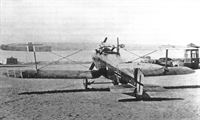 |
C.Owers, J.Herris - Hannover Aircraft of WWI /Centennial Perspective/ (46)
|
| The CL.V was first tested at Aldershoft with the biplane tail. This prototype was powered by the 170-hp Mercedes D.IIIa engine.
|
 |
C.Owers, J.Herris - Hannover Aircraft of WWI /Centennial Perspective/ (46)
|
| The second version of the Hannover CL.V design replaced the biplane tail of the earlier Hawa types with a more conventional tail. This was done at the request of Hawa.
|
 |
C.Owers, J.Herris - Hannover Aircraft of WWI /Centennial Perspective/ (46)
|
| Rearview of monoplane tail version of the Hannover CL.V.
|
 |
O.Thetford, P.Gray - German Aircraft of the First World War /Putnam/
|
| Hannover CL V (second version)
|
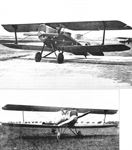 |
C.Owers, J.Herris - Hannover Aircraft of WWI /Centennial Perspective/ (46)
|
| This is the final version of the CL.V design. The nose radiator had been perfected and was used to good effect on many German aircraft in the latter days of the war.
|
 |
C.Owers, J.Herris - Hannover Aircraft of WWI /Centennial Perspective/ (46)
|
| Airbrushed photo of the second version of the Hannover CLV design showing nose details. Closeup below.
|
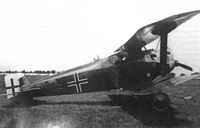 |
C.Owers, J.Herris - Hannover Aircraft of WWI /Centennial Perspective/ (46)
|
A Hannoversche reconnaissance Biplane, Type C.L.V. (second series), with large single wooden streamline struts and a monoplane tail.
The final Hannover CL.V design used a conventional, monoplane tail. This image shows the refined, streamlined lines of the CL.V. The pilot's fixed guns are clearly visible.
|
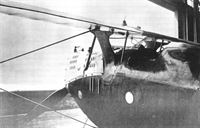 |
C.Owers, J.Herris - Hannover Aircraft of WWI /Centennial Perspective/ (46)
|
| Closeup view of the Halberstadt CL.V. cockpit area.
|
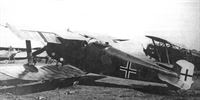 |
C.Owers, J.Herris - Hannover Aircraft of WWI /Centennial Perspective/ (46)
|
| The final version of the Hannover CL.V with monoplane tail with a Hannover CL.IIIa in the background. This shows the CL.V was more streamlined that the earlier Hannover designs.
|
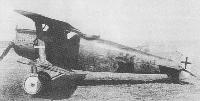 |
W.Green, G.Swanborough - The Complete Book of Fighters
|
| Last of the Hannover fighters, the CL V was too late for service in World War I.
|
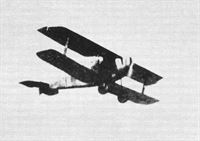 |
C.Owers, J.Herris - Hannover Aircraft of WWI /Centennial Perspective/ (46)
|
| The final version of the Hannover CL.V design with monoplane tail in flight.
|
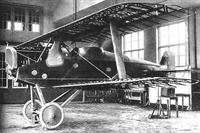 |
C.Owers, J.Herris - Hannover Aircraft of WWI /Centennial Perspective/ (46)
|
| The second version of the Hannover CL.V design with monoplane tail under construction in the factory.
|
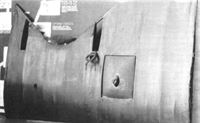 |
C.Owers, J.Herris - Hannover Aircraft of WWI /Centennial Perspective/ (46)
|
| The central portion of a one-piece Hannover CL.V wing has been cut out showing the aileron control rod cutouts and the gravity tank.
|
 |
C.Owers, J.Herris - Hannover Aircraft of WWI /Centennial Perspective/ (46)
|
| The Hannover Type 6 was an 'express transport' derived from the CL.V. It could carry two passengers in addition to the pilot. It could achieve 180 km/h. Aircraft D.84 broke the world's altitude record on 22 October 1919.
|
 |
C.Owers, J.Herris - Hannover Aircraft of WWI /Centennial Perspective/ (46)
|
| Hannover CL.V Hauk 203.
|
 |
C.Owers, J.Herris - Hannover Aircraft of WWI /Centennial Perspective/ (46)
|
| Hannover CL.V Hauk 203.
|
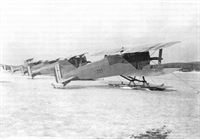 |
C.Owers, J.Herris - Hannover Aircraft of WWI /Centennial Perspective/ (46)
|
| Hannover CL.V Hauk 203 with pilot. (Norsk Teknisk Museum)
|
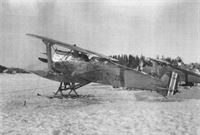 |
C.Owers, J.Herris - Hannover Aircraft of WWI /Centennial Perspective/ (46)
|
| Another view of 203 displaying the ski arrangement. Note the ski on the tail skid. (Norsk Teknisk Museum)
|
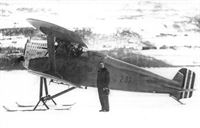 |
C.Owers, J.Herris - Hannover Aircraft of WWI /Centennial Perspective/ (46)
|
Hannover CL.V Hauk 207 on skis with pilot aboard and engine running. (Norsk Teknisk Museum)
A licence-built version of the CL V, the F.F.7 remained in service in Norway until 1929.
|
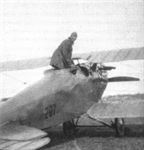 |
C.Owers, J.Herris - Hannover Aircraft of WWI /Centennial Perspective/ (46)
|
| Hannover CL.V Hauk 207 with observer entering the rear cockpit. (Norsk Teknisk Museum)
|
 |
C.Owers, J.Herris - Hannover Aircraft of WWI /Centennial Perspective/ (46)
|
| Hannover CL.V Hauk 209. (Norsk Teknisk Museum)
|
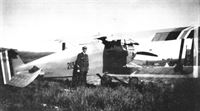 |
C.Owers, J.Herris - Hannover Aircraft of WWI /Centennial Perspective/ (46)
|
| Hannover CL.V Hauk 213 with pilot. (Norsk Teknisk Museum)
|
 |
C.Owers, J.Herris - Hannover Aircraft of WWI /Centennial Perspective/ (46)
|
| Hannover CL.V Hauk.
|
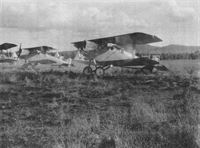 |
C.Owers, J.Herris - Hannover Aircraft of WWI /Centennial Perspective/ (46)
|
| Hannover CL.V Hauk lineup. (Norsk Teknisk Museum)
|
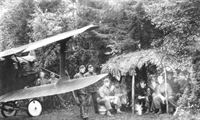 |
C.Owers, J.Herris - Hannover Aircraft of WWI /Centennial Perspective/ (46)
|
| Hannover CL.V Hauk with unit members in the woods. (Norsk Teknisk Museum)
|
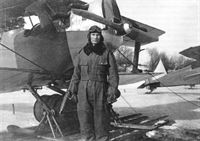 |
C.Owers, J.Herris - Hannover Aircraft of WWI /Centennial Perspective/ (46)
|
| Hannover CL.V Hauk on skis with pilot. (Norsk Teknisk Museum)
|
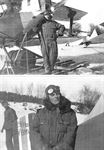 |
C.Owers, J.Herris - Hannover Aircraft of WWI /Centennial Perspective/ (46)
|
| Hannover CL.V Hauk on skis with pilot. (Norsk Teknisk Museum)
|
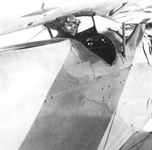 |
C.Owers, J.Herris - Hannover Aircraft of WWI /Centennial Perspective/ (46)
|
| The pilot was seated high in the fuselage of the Hauk. Note the aileron control torque tube arrangement from the wing to the fuselage. (Norsk Teknisk Museum)
|
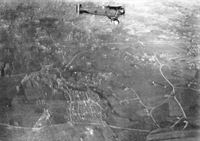 |
C.Owers, J.Herris - Hannover Aircraft of WWI /Centennial Perspective/ (46)
|
| Hannover CL.V Hauk 209 (?) in flight over Oslo. (Norsk Teknisk Museum)
|
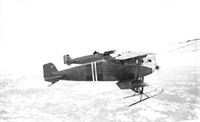 |
C.Owers, J.Herris - Hannover Aircraft of WWI /Centennial Perspective/ (46)
|
| Hauk serial 225 has the Norwegian markings around the fuselage rather than on the rudder. This marking variation is seen on a number of Army and Navy aircraft. The reason for this is unknown. (Norsk Teknisk Museum)
|
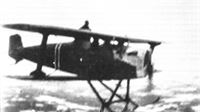 |
C.Owers, J.Herris - Hannover Aircraft of WWI /Centennial Perspective/ (46)
|
| The observer stands quite high in the slipstream in this photograph of a ski equipped Hauk. One wonders what effect this would have on the flight characteristics of the machine. (Norsk Teknisk Museum)
|
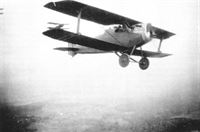 |
C.Owers, J.Herris - Hannover Aircraft of WWI /Centennial Perspective/ (46)
|
| Hannover CL.V Hauks in flight. (Norsk Teknisk Museum)
|
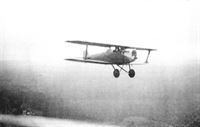 |
C.Owers, J.Herris - Hannover Aircraft of WWI /Centennial Perspective/ (46)
|
| Hannover CL.V Hauk in flight. (Norsk Teknisk Museum)
|
 |
C.Owers, J.Herris - Hannover Aircraft of WWI /Centennial Perspective/ (46)
|
| Another ski-equipped Hauk with the national markings as fuselage bands. (Norsk Teknisk Museum)
|
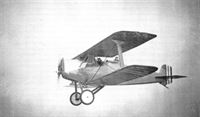 |
C.Owers, J.Herris - Hannover Aircraft of WWI /Centennial Perspective/ (46)
|
| Hannover CL.V Hauk in flight. (Norsk Teknisk Museum)
|
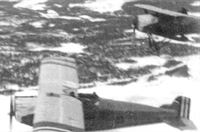 |
C.Owers, J.Herris - Hannover Aircraft of WWI /Centennial Perspective/ (46)
|
| Hannover CL.V Hauks with skis in flight. (Norsk Teknisk Museum)
|
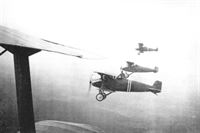 |
C.Owers, J.Herris - Hannover Aircraft of WWI /Centennial Perspective/ (46)
|
| Hannover CL.V Hauks in flight. Note that two machines in this formation of CL.V Hauks carry the national markings as bands around the fuselage and not on their rudders. (Norsk Teknisk Museum)
|
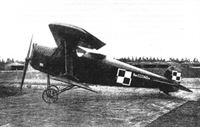 |
C.Owers, J.Herris - Hannover Aircraft of WWI /Centennial Perspective/ (46)
|
| Hannover CL.V in Polish postwar service.
|
 |
C.Owers, J.Herris - Hannover Aircraft of WWI /Centennial Perspective/ (46)
|
| Hauk at the Norsk Teknisk Museum
|
 |
C.Owers, J.Herris - Hannover Aircraft of WWI /Centennial Perspective/ (46)
|
| Hauk at the Norsk Teknisk Museum
|
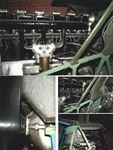 |
C.Owers, J.Herris - Hannover Aircraft of WWI /Centennial Perspective/ (46)
|
| Hauk at the Norsk Teknisk Museum
|
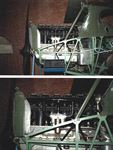 |
C.Owers, J.Herris - Hannover Aircraft of WWI /Centennial Perspective/ (46)
|
| Hauk at the Norsk Teknisk Museum
|
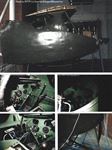 |
C.Owers, J.Herris - Hannover Aircraft of WWI /Centennial Perspective/ (46)
|
| Hauk at the Norsk Teknisk Museum
|
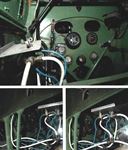 |
C.Owers, J.Herris - Hannover Aircraft of WWI /Centennial Perspective/ (46)
|
| Hauk at the Norsk Teknisk Museum
|
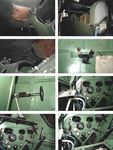 |
C.Owers, J.Herris - Hannover Aircraft of WWI /Centennial Perspective/ (46)
|
| Hauk at the Norsk Teknisk Museum
|
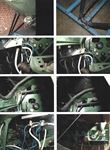 |
C.Owers, J.Herris - Hannover Aircraft of WWI /Centennial Perspective/ (46)
|
| Hauk at the Norsk Teknisk Museum
|
 |
C.Owers, J.Herris - Hannover Aircraft of WWI /Centennial Perspective/ (46)
|
| Hauk at the Norsk Teknisk Museum
|
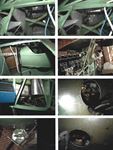 |
C.Owers, J.Herris - Hannover Aircraft of WWI /Centennial Perspective/ (46)
|
| Hauk at the Norsk Teknisk Museum
|
 |
C.Owers, J.Herris - Hannover Aircraft of WWI /Centennial Perspective/ (46)
|
| Hauk at the Norsk Teknisk Museum
|
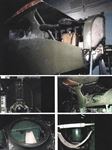 |
C.Owers, J.Herris - Hannover Aircraft of WWI /Centennial Perspective/ (46)
|
| Hauk at the Norsk Teknisk Museum
|
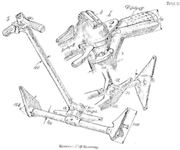 |
C.Owers, J.Herris - Hannover Aircraft of WWI /Centennial Perspective/ (46)
|
| Hannover CL.V controls.
|
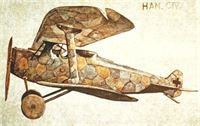 |
C.Owers, J.Herris - Hannover Aircraft of WWI /Centennial Perspective/ (46)
|
| Japanese color sketch of the Hannover CL.V sent to Japan as war reparations.
|
 |
C.Owers, J.Herris - Hannover Aircraft of WWI /Centennial Perspective/ (46)
|
|
|
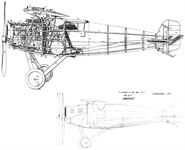 |
C.Owers, J.Herris - Hannover Aircraft of WWI /Centennial Perspective/ (46)
|
| Hannover CL.V
|
 |
C.Owers, J.Herris - Hannover Aircraft of WWI /Centennial Perspective/ (46)
|
|
|
 |
C.Owers, J.Herris - Hannover Aircraft of WWI /Centennial Perspective/ (46)
|
|
|
 |
C.Owers, J.Herris - Hannover Aircraft of WWI /Centennial Perspective/ (46)
|
|
|
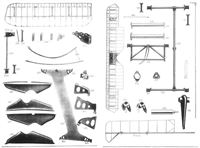 |
C.Owers, J.Herris - Hannover Aircraft of WWI /Centennial Perspective/ (46)
|
|
|
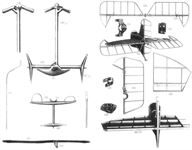 |
C.Owers, J.Herris - Hannover Aircraft of WWI /Centennial Perspective/ (46)
|
|
|
 |
C.Owers, J.Herris - Hannover Aircraft of WWI /Centennial Perspective/ (46)
|
|
|
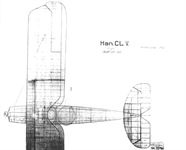 |
C.Owers, J.Herris - Hannover Aircraft of WWI /Centennial Perspective/ (46)
|
|
|
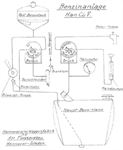 |
C.Owers, J.Herris - Hannover Aircraft of WWI /Centennial Perspective/ (46)
|
|
|
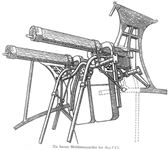 |
C.Owers, J.Herris - Hannover Aircraft of WWI /Centennial Perspective/ (46)
|
| Hannover CL.V cabane and fixed guns.
|
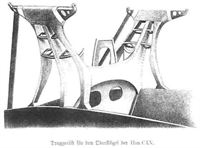 |
C.Owers, J.Herris - Hannover Aircraft of WWI /Centennial Perspective/ (46)
|
| Hannover CL.V cabane section.
|
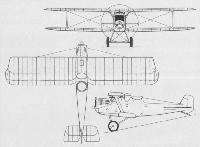 |
W.Green, G.Swanborough - The Complete Book of Fighters
|
| Last of the Hannover fighters, the CL V was too late for service in World War I.
|
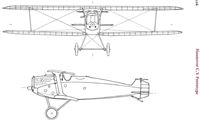 |
C.Owers, J.Herris - Hannover Aircraft of WWI /Centennial Perspective/ (46)
|
| Hannover C.V Prototype
|
 |
C.Owers, J.Herris - Hannover Aircraft of WWI /Centennial Perspective/ (46)
|
| Hannover C.V Prototype
|
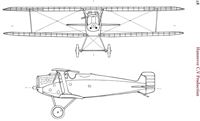 |
C.Owers, J.Herris - Hannover Aircraft of WWI /Centennial Perspective/ (46)
|
| Hannover C.V Production
|
 |
C.Owers, J.Herris - Hannover Aircraft of WWI /Centennial Perspective/ (46)
|
| Hannover C.V Production
|

